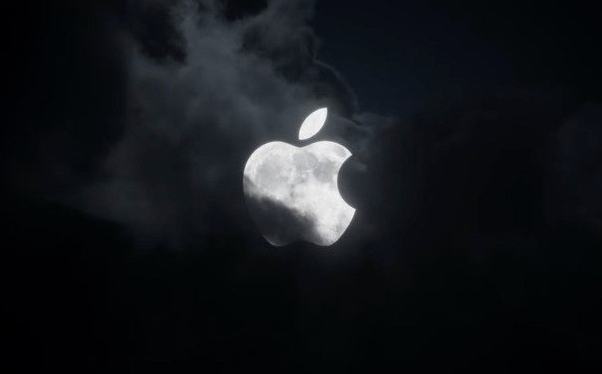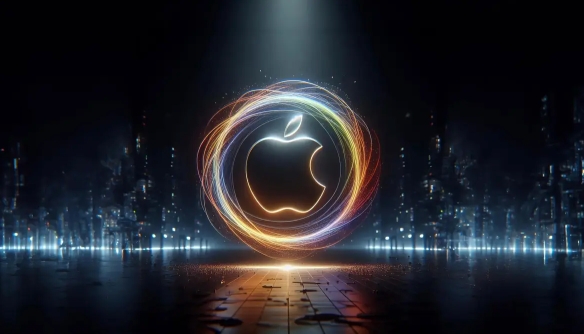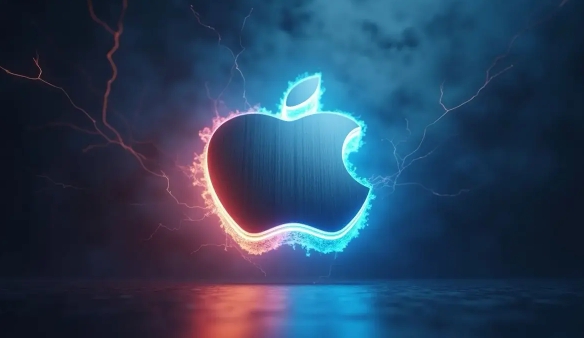 Computer Tutorials
Computer Tutorials
 System Installation
System Installation
 How to properly format a USB for a macOS bootable installer?
How to properly format a USB for a macOS bootable installer?
How to properly format a USB for a macOS bootable installer?
Jul 08, 2025 am 01:13 AMTo correctly format the USB to create a bootable installation disk that is recognizable to macOS, use specific formats and partition settings. First make sure that the USB is at least 12GB (16GB or greater recommended) and back up the data; then format the USB to "Mac OS Extended (Journaled)" through Disk Tool and set the partition scheme to "GUID Partition Map"; then download the required version of the macOS installer from the Mac App Store; then run the command sudo /Applications/Install\\ macOS\\ [version].app/Contents/Resources/createinstallmedia --volume /Volumes/USB name to create a bootable USB; finally hold down the Option key when restarting the Mac to select USB boot. The order of the above steps cannot be reversed, and it must be operated accurately to avoid accidentally deleting hard disk data.

To properly format a USB for a macOS bootable installer, you need to prepare the drive using specific formatting and partitioning settings that macOS expects. This ensures the installer can recognize and use the USB correctly during installation.

Use a USB with at least 12GB of storage
Before anything else, make sure your USB flash drive has enough space — at least 12GB is recommended, though 16GB or more is better if you're installing a newer version of macOS. The drive will be completely erased, so back up any important data before proceeding.

- Plug in the USB drive
- Open Disk Utility (you can find it via Spotlight or Applications > Utilities)
- Select the USB drive from the list on the left (be sure to pick the correct one!)
- Click “Erase” at the top
- Choose these settings:
- Name : Something like "MacUSB" or "InstallDrive"
- Format : Mac OS Extended (Journaled)
- Scheme : GUID Partition Map
Click “Erase” to confirm. Wait until the process completes.
Download the macOS installer
You'll need a copy of the macOS installer from the Mac App Store. Depending on your needs, this could be the latest version or an older one compatible with your hardware.

- Go to the Mac App Store or search directly in the App Store app
- Find the macOS version you want and click "Get" then "Download"
- The installer will appear in your Applications folder
Note: If you're downloading a version not for your current Mac, you may need to adjust System Preferences to allow apps from unidentified developers.
Create the bootable installer using Terminal
Once the USB is formatted and the macOS installer is downloaded, it's time to create the bootable USB using the Terminal command line tool.
- Open Terminal (again, under Applications > Utilities)
- Type or paste the following command, replacing “YourUSBName” with the actual name of your USB:
sudo /Applications/Install\ macOS\ [Version].app/Contents/Resources/createinstallmedia --volume /Volumes/YourUSBName
For example, if your USB is named “MacUSB” and you're installing Monterey:
sudo /Applications/Install\ macOS\ Monterey.app/Contents/Resources/createinstallmedia --volume /Volumes/MacUSB
- Press Enter and type your password when prompted (you won't see it as you type)
- Confirm by typing “Y” when asked
- Wait several minutes while the tool copies the installer files to the USB
This process will erase the USB again and make it bootable.
Boot from the USB
After the process finishes, your USB is ready to use. To test or install macOS:
- Insert the USB into your Mac
- Restart the Mac
- Immediately hold down the Option (?) key after restart
- You should see the USB drive labeled “macOS Install Media” — select it with the arrow keys and press Enter
If everything was done right, the macOS installer will load from the USB.
That's the basic process. It's straightforward once you've got the steps down, but easy to mess up if you choose the wrong disk or skip a formatting step. Double-check everything before hitting “erase” or running the command.
The above is the detailed content of How to properly format a USB for a macOS bootable installer?. For more information, please follow other related articles on the PHP Chinese website!

Hot AI Tools

Undress AI Tool
Undress images for free

Undresser.AI Undress
AI-powered app for creating realistic nude photos

AI Clothes Remover
Online AI tool for removing clothes from photos.

Clothoff.io
AI clothes remover

Video Face Swap
Swap faces in any video effortlessly with our completely free AI face swap tool!

Hot Article

Hot Tools

Notepad++7.3.1
Easy-to-use and free code editor

SublimeText3 Chinese version
Chinese version, very easy to use

Zend Studio 13.0.1
Powerful PHP integrated development environment

Dreamweaver CS6
Visual web development tools

SublimeText3 Mac version
God-level code editing software (SublimeText3)

Hot Topics
 How to handle high DPI display in C?
Apr 28, 2025 pm 09:57 PM
How to handle high DPI display in C?
Apr 28, 2025 pm 09:57 PM
Handling high DPI display in C can be achieved through the following steps: 1) Understand DPI and scaling, use the operating system API to obtain DPI information and adjust the graphics output; 2) Handle cross-platform compatibility, use cross-platform graphics libraries such as SDL or Qt; 3) Perform performance optimization, improve performance through cache, hardware acceleration, and dynamic adjustment of the details level; 4) Solve common problems, such as blurred text and interface elements are too small, and solve by correctly applying DPI scaling.
 How to uninstall MySQL and clean residual files
Apr 29, 2025 pm 04:03 PM
How to uninstall MySQL and clean residual files
Apr 29, 2025 pm 04:03 PM
To safely and thoroughly uninstall MySQL and clean all residual files, follow the following steps: 1. Stop MySQL service; 2. Uninstall MySQL packages; 3. Clean configuration files and data directories; 4. Verify that the uninstallation is thorough.
 macOS: System Architecture and Core Components
Apr 28, 2025 am 12:05 AM
macOS: System Architecture and Core Components
Apr 28, 2025 am 12:05 AM
The system architecture of macOS includes hardware abstraction layer, XNU core, I/OKit, core services and Aqua user interface. Core components include the startup process, the APFS file system, and SystemIntegrityProtection. Performance optimization and best practices involve hardware configuration, software setup, and development skills.
 Detailed explanation of the installation steps of MySQL on macOS system
Apr 29, 2025 pm 03:36 PM
Detailed explanation of the installation steps of MySQL on macOS system
Apr 29, 2025 pm 03:36 PM
Installing MySQL on macOS can be achieved through the following steps: 1. Install Homebrew, using the command /bin/bash-c"$(curl-fsSLhttps://raw.githubusercontent.com/Homebrew/install/HEAD/install.sh)". 2. Update Homebrew and use brewupdate. 3. Install MySQL and use brewinstallmysql. 4. Start MySQL service and use brewservicesstartmysql. After installation, you can use mysql-u
 laravel installation code
Apr 18, 2025 pm 12:30 PM
laravel installation code
Apr 18, 2025 pm 12:30 PM
To install Laravel, follow these steps in sequence: Install Composer (for macOS/Linux and Windows) Install Laravel Installer Create a new project Start Service Access Application (URL: http://127.0.0.1:8000) Set up the database connection (if required)
 macOS and Linux: Compatibility and User Experience
Apr 30, 2025 am 12:05 AM
macOS and Linux: Compatibility and User Experience
Apr 30, 2025 am 12:05 AM
macOS and Linux have their own advantages in compatibility and user experience. macOS has excellent compatibility within the Apple ecosystem, and the user experience is simple and intuitive; Linux has outstanding hardware compatibility and software flexibility. The user experience varies from distribution to distribution, emphasizing personalization and control.
 How to check the warehouse address of git
Apr 17, 2025 pm 01:54 PM
How to check the warehouse address of git
Apr 17, 2025 pm 01:54 PM
To view the Git repository address, perform the following steps: 1. Open the command line and navigate to the repository directory; 2. Run the "git remote -v" command; 3. View the repository name in the output and its corresponding address.
 What are the cross-platform development environments in C?
Apr 28, 2025 pm 09:24 PM
What are the cross-platform development environments in C?
Apr 28, 2025 pm 09:24 PM
Cross-platform development in C is recommended to use VisualStudioCode, CLion and QtCreator. 1. VisualStudioCode is lightweight and flexible, suitable for multi-platform development, but the initial configuration is more complicated. 2. CLion integrates CMake, suitable for cross-platform projects, but licenses are expensive. 3.QtCreator supports cross-platform development, with built-in Qt library, but the learning curve is steep.





